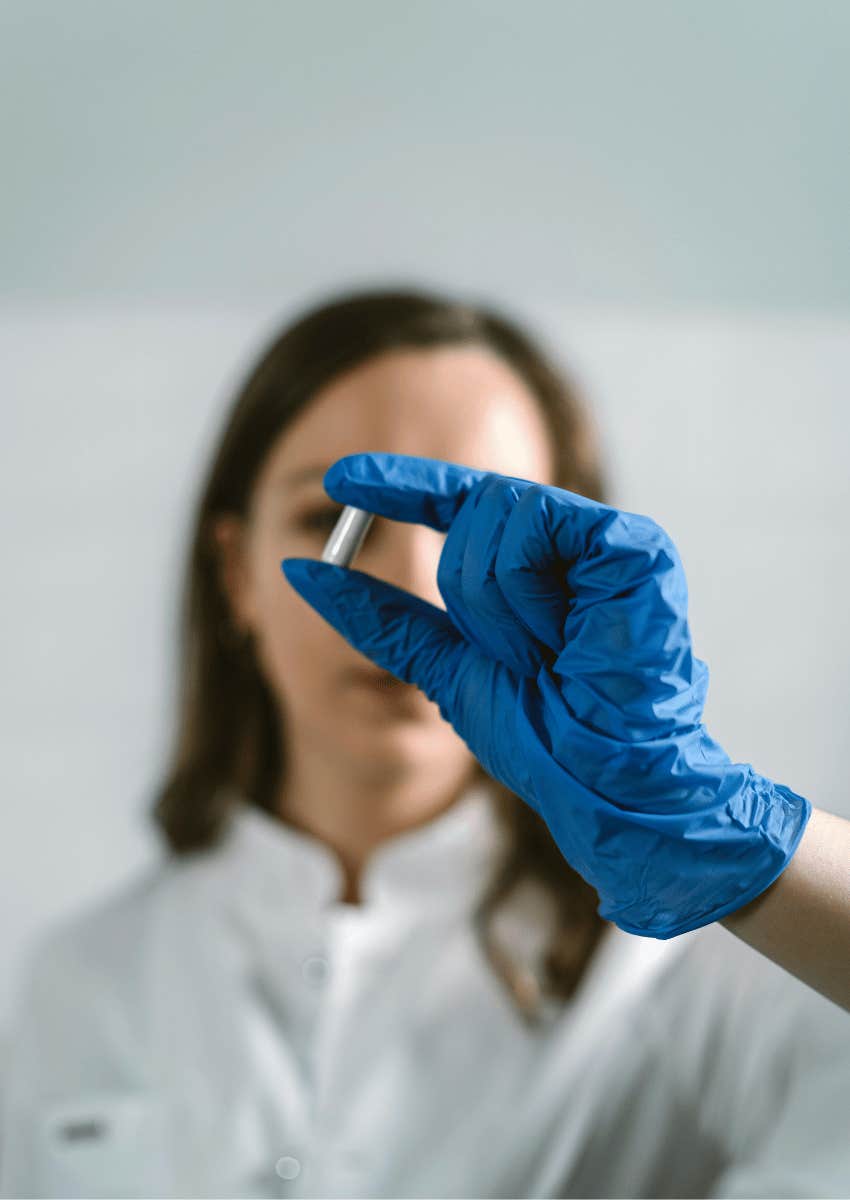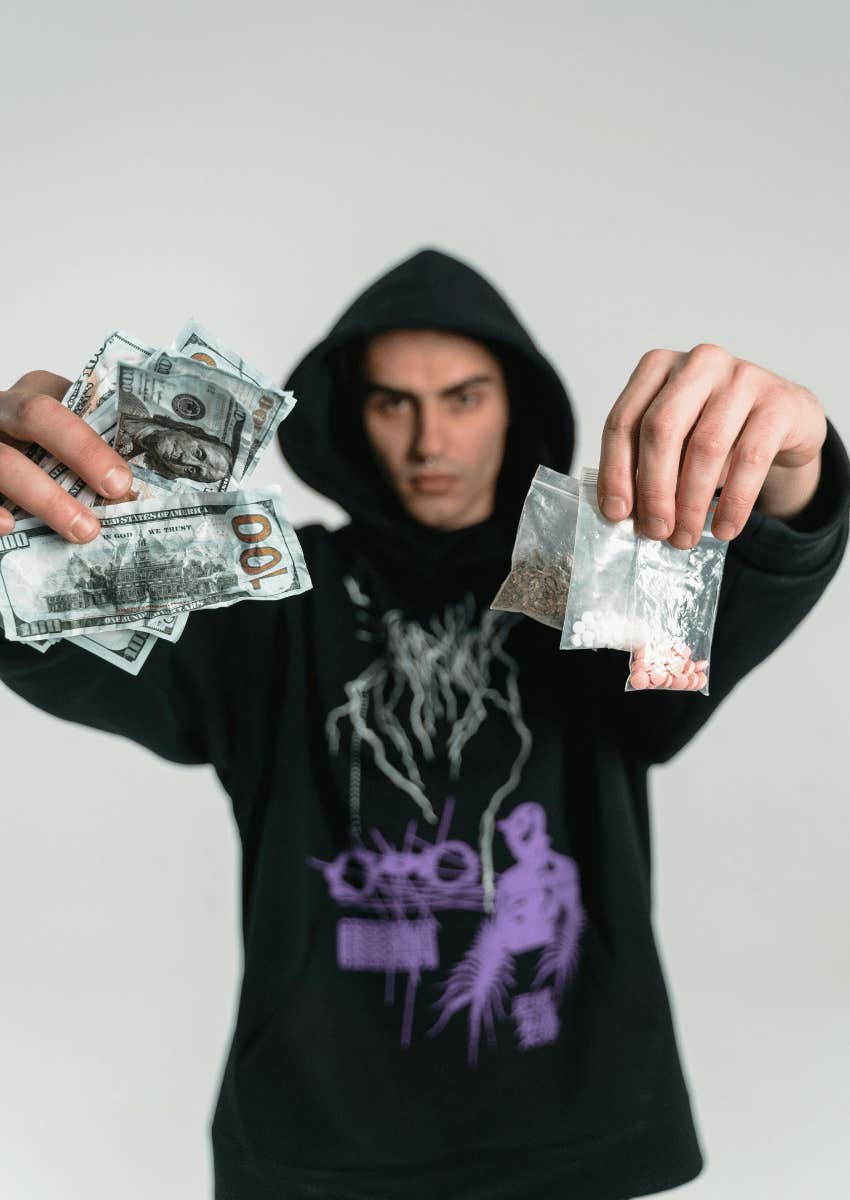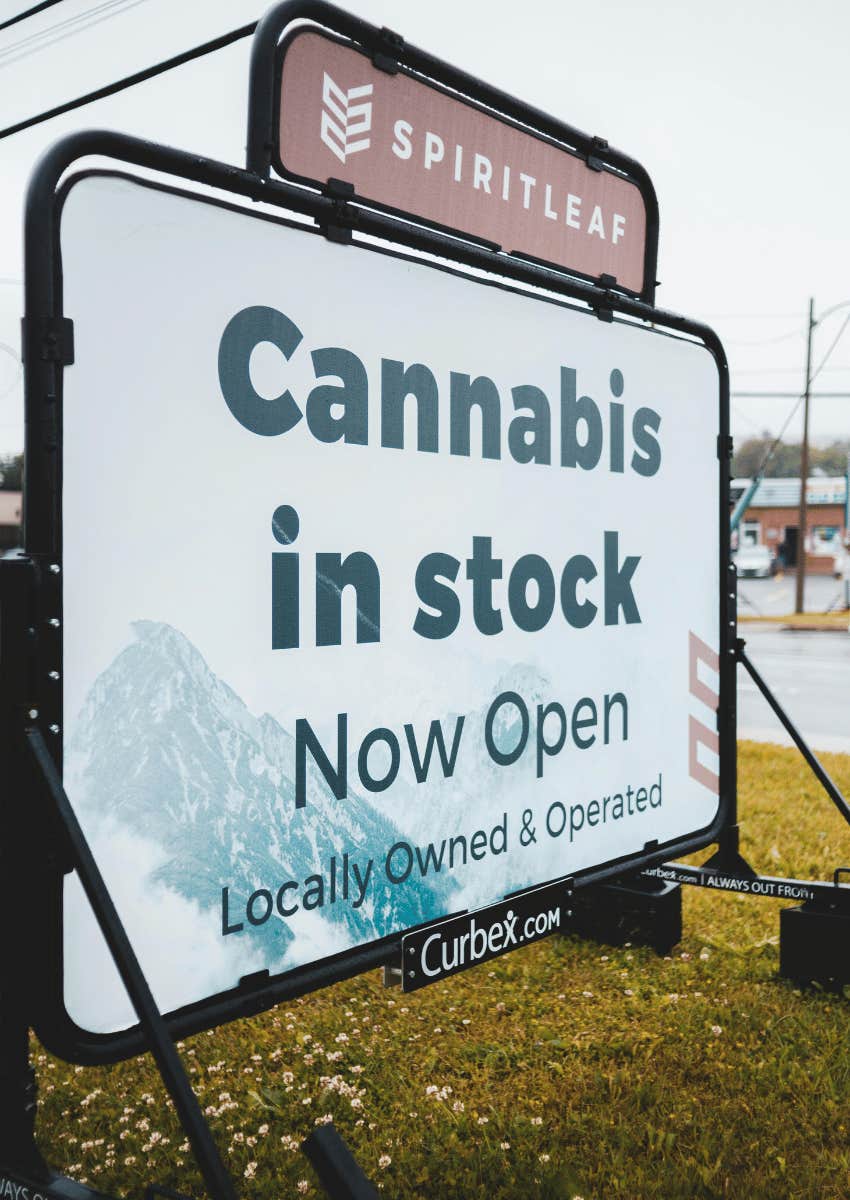I'm A Neuroscientist: This Is How The Stimulant Epidemic Messes With All Of Us
Will new DEA regulations make things better or worse?
 bernardbodo | Canva
bernardbodo | Canva I opened my garden-level psychiatry home office on a tree-lined street in San Francisco at the beginning of the millennium. It felt like an oasis amid a high-density urban setting. By the time I moved to Hawaii, in 2022, there hadn’t been a day in the previous six or seven years without homeless addicts passed out at the end of the block, or openly cooking crack in the doorways of their sidewalk tents.
Although there were no deaths on my block, almost one out of every thousand San Franciscans died from an overdose in 2023 — a horrendous rate, but one that was eclipsed by more than a dozen other US cities. I would tell my twins, who mostly commented out of curiosity regarding these scenes, or my patients, who often responded with fear, disgust, or horror: “I don’t know any kid who says: ‘Gosh, when I grow up, I’m going to become an addict!’”
Nobody plans for such a life. Or death. A mix of social, personal, and biological factors contribute to anyone winding up on the path to addiction. If we could predict that deadly combination more accurately, we would prevent the unfolding of many personal disasters.
Even if, so far, you’ve never used illicit drugs, or consumed anything stronger than caffeine from tea or coffee, you might still someday end up among those with a substance abuse problem. And if not you, then someone close to you — a family member, neighbor, or classmate — might become addicted.
My point: Even if addiction remains far from your life, it still has an impact on communities, urban or rural, near you. If you’re taking any type of medication, the opioid epidemic, and its current manifestation as an opioid/stimulant epidemic, has probably contributed to making your experience at your local pharmacy more miserable, as I’ll explain later.
Becoming familiar with the magnitude of the stimulant epidemic, the intertwining of prescription and street stimulant use, and our government’s efforts to control this problem will show you how few of us completely escape some impact from this scourge.
How big a problem is the stimulant epidemic?
 Nicola Barts | Pexels
Nicola Barts | Pexels
In its broadest sense, stimulants are any drugs that activate the sympathetic nervous system and rev you up. This includes caffeine, decongestants, and the much lesser-known but still effective theobromine in chocolate. The stimulant epidemic, though, refers to the explosive increase in the use of prescription medications and illicit stimulants.
Methylphenidate (Ritalin) and amphetamine (Adderall, Vyvanse) are used to treat ADHD, narcolepsy, and a few other conditions. The two commonly used street stimulants are cocaine and methamphetamine, available in edible, smokable, and injectable forms.
Street stimulants share chemical similarities with prescription drugs. But cocaine and meth have a greater propensity for causing addiction, psychosis, and other serious health problems, not only because of their molecular structures but also because of how they tend to be used. We once worried a lot less about all this. But times have changed.
In 2000, as I was setting up shop in the City by the Bay, overdose drug deaths in the US killed fewer than 10,000 people. Of that total, stimulants contributed to less than 4,000 deaths, of which about 80% were due to cocaine.
In the span of a generation, overdose deaths increased 10-fold. More than 100,000 individuals have died from fatal overdoses each year since 2021.
Waves of death
 Mikhail Nilov | Pexels
Mikhail Nilov | Pexels
The government includes unintentional overdoses, as well as suicides and murders in the “overdose deaths” category. Over the last quarter century, the vast majority of these deaths have been from using opioids, so it is appropriate that opioids have drawn so much media attention. The opioid epidemic swept over America in four stages, or waves.
Prescription painkillers comprised the first wave. Following initial crackdowns on prescribing opioids, prescription painkillers and heroin made up the second wave. Heroin use peaked in 2015, and overdoses due to consuming only prescription opioids have been declining since 2016.
The third wave involved prescription painkillers and fentanyl. Fentanyl, a synthetic opioid, is so potent that it is easy to miscalculate a safe dose causing deaths from overdoses to skyrocket.
Most recently, we’re seeing what some consider the fourth wave of the opioid epidemic, with the use of stimulants being combined with opioids. In 2010, only 0.6% of overdoses were due to a combination of fentanyl and stimulants, which rose to 32.3% by 2021. Within a year or two, this category is expected to constitute the biggest proportion of all overdose deaths.
Over that same decade, the share of all overdose deaths due to stimulants without fentanyl rose slightly, from 14.8% to 17.9%. That’s not a huge leap percentage-wise, but since total overdose deaths jumped from 38,000 to 106,000 over that period, it was a very large total increase. In the last few years, stimulants, either alone or in combination with fentanyl, have been contributing to at least 50,000 overdose deaths each year.
Some argue about whether this huge boost in stimulant use and death should be considered the fourth wave of the opioid epidemic or declared its own, separate stimulant epidemic. Either way, it’s important to recognize that the majority of street use and deaths do involve stimulants combined with opioids.
DEA to the rescue?
 Mario Spencer | Pexels
Mario Spencer | Pexels
The Drug Enforcement Administration (DEA), forged in the early days of Nixon’s “War on Drugs,” has two conflicting mandates. It is both a law enforcement agency, cracking down on illicit drug use in various forms, and is also in charge of approving and managing an adequate and safe supply of controlled substances to meet the medical needs of Americans.
The DEA’s mission statement captures this duality and reveals which role it emphasizes. Of its primary responsibilities, seven out of nine concern law enforcement and apprehending criminals, and only two pertain to ensuring that legitimate prescription needs are met.
The DEA regulates controlled substances, which include opioid painkillers; stimulants used for treating ADHD and other conditions; and many prescription sleep and anxiety medications. To combat the opioid epidemic, the DEA created new rules and regulations for manufacturers, pharmacies, and prescribers.
The DEA sees the epidemic of overdose deaths from both opioids and stimulants epidemics as intricately tied to prescribing practices, blurring the distinction between proper use of medications and the abuse of illicit street drugs. Research indicates that for both opioids and stimulants, a large proportion of those who abuse street drugs were either earlier, or simultaneously, prescribed medications from the same class of drugs.
Parallels between stimulant and opioid epidemics
 MART PRODUCTION | Pexels
MART PRODUCTION | Pexels
Matthew Strait, Senior Policy Advisor of the DEA, sees strong parallels between the opioid epidemic and the emerging stimulant epidemic. He singles out “American’s propensity for pharmaceutical drugs” as a major contributor to both epidemics. According to Strait, hallmarks of the epidemics include:
- identification of a medical problem as a public health concern
- assurance that addiction to the medication will not be a problem
- exploitation via the internet
- the pharmacologic proliferation of products
- expansion of criminal enterprises in the growing market
- a lag in effective treatment
In the 1990s the medical establishment decreed that pain and its management were being neglected. Doctors were instructed to monitor pain, as the “5th vital sign”, along with heart rate, blood pressure, respiratory rate, and temperature. The claim that pain was being under-treated provided a rationale for prescribing more painkillers, which kicked off the opioid epidemic.
Similarly, awareness that ADHD persists into adulthood and that ADHD was being ignored in millions of adults, provided medical justification for diagnosing more cases of ADHD, and prescribing stimulants to more people. From 2012 to 2022, the number of individuals receiving prescriptions for stimulant medications rose from 12 million to 16 million, and the number of prescriptions shot up 57.9%. The US population grew by less than 8% during that decade.
Medical professionals, and drug company representatives, emphasized that the risks of addiction were quite low, with either prescription opioid pain medications or stimulants. Many patients were not informed about the potential for addiction to either type of medication.
Social media greatly expanded access to information and misinformation about opioids and stimulants. The internet also provides advice on how to convince your doctor to prescribe these medications, and how to obtain alternatives if your doctor won’t prescribe them. The internet has facilitated both the opioid and stimulant epidemics.
Much of the dramatic rise in prescriptions for stimulants in the last five years has arisen from telehealth companies that specifically target adults with symptoms of ADHD. Stimulant prescriptions for children have declined slightly over the last decade, while those for adults have shot up close to 60% over that period. Stimulant prescriptions for adult women with ADHD have shown the most dramatic increase.
Pharmaceutical companies registered large numbers of new drugs with the FDA to capture the expanding markets. The number of varieties of prescription opioids and stimulants expanded greatly. Often the distinctions between these new products were more marketing strategies than genuine pharmacologic advancements.
However, drug companies marketed their new compounds to promote more use. Organized crime responded to increased consumer interest and boosted the production and availability of illicit versions of prescription drugs.
This isn’t our first stimulant epidemic. Except for promotion on the internet, the first stimulant epidemic, in the post-WW2 era, aligned with the pattern of the recent opioid and stimulant epidemics. Doctors widely promoted stimulants as an effective way to alleviate depression. They were considered safe enough to be given to thousands of soldiers during the war to help with exhaustion, motivation, and mood. We ended up with many addicted veterans.
Do any treatments work?
 Marjan Apostolovic | Shutterstock
Marjan Apostolovic | Shutterstock
One big difference between the stimulant and opioid epidemics is that the rescue drug naloxone (Narcan) can quickly block the effects of opioids, and prevent overdose death. Access to naloxone was inadequate in the early years of the opioid epidemic, but it is more widely available now. However, we have no effective rescue medication for stimulant overdoses.
Numerous studies indicate that two relatively safe opioid medications, methadone, and buprenorphine, can reduce street opioid use, improve user’s health, and save lives. The demand for such programs continues to exceed what our healthcare system is providing.
Just as we have no rescue medications for stimulants, some nihilists claim we have no effective medication treatments either. But several studies, conducted for those with ADHD, and among the general population, indicate that the use of the prescription, slow-release stimulant Vyvanse is associated with keeping those with cocaine and meth addictions in treatment longer, as well as reducing relapse rates and deaths.
The antidepressants Wellbutrin (bupropion) and Remeron (mirtazapine) have also been shown to reduce relapse among stimulant addicts. However, the preliminary studies need replication, and information about the potential benefits of these drugs has not been widely shared.
Some individuals find community-based support groups, like AA (Alcoholics Anonymous) and NA (Narcotics Anonymous) helpful in curbing their substance use, and they’re free, and available across the country. Behavioral therapies, particularly contingency management approaches, where individuals receive rewards for “good” behavior, also show measurable positive impacts for those with either stimulant or opioid abuse problems.
What will the DEA do?
 Kindel Media | Pexels
Kindel Media | Pexels
The DEA has identified that telemedicine clinics focused on quick evaluation and treatment of ADHD have played a large role in the surge in prescription stimulants over the last few years. Telemedicine proliferated during the COVID lockdowns, with psychiatry being among the fields with the greatest proportion of visits conducted remotely, both during the pandemic and in its aftermath.
Teleprescribing rules were relaxed during the COVID-19 public health emergency (PHE). In February 2023, before the planned termination of the PHE in May, the DEA proposed new rules for prescribing controlled substances. One of their suggestions took direct aim at the business model of the telehealth ADHD clinics, requiring that new patients be evaluated once in person before receiving any stimulant medication prescription.
The DEA received a record 38,000 comments on their proposals, the majority objecting to this new regulation. In response, two days before the end of the PHE, the DEA just extended the existing pandemic telemedicine rules until the end of 2023. In October 2023 they extended them again until the end of 2024.
The DEA seems unlikely to extend the rollout of new rules again, particularly since the stimulant epidemic shows no signs of abating. They’re unlikely to act like the Department of Homeland Security, which has delayed the deadline for the institution of the REAL ID passes so often, that their most recent rationale for extending the deadline once again, beyond May 2025, was that so few people had paid attention to the previous deadlines for obtaining a REAL ID because they assumed the deadline would be delayed yet again.
Work farmed out to pharmacists.
 MART PRODUCTION | Pexels
MART PRODUCTION | Pexels
Regardless of what the DEA decides, their proposals have already been having an impact. In anticipation of the changes, pharmacies are routinely taking protective measures to make sure that they don’t get into trouble.
Many of these go far beyond any DEA proposal to date. For example, several of the big chain pharmacies instituted forms asking doctors to attest, both for new and existing patients, whether the most recent visit was in person or via telehealth. These measures intrude inappropriately into the doctor-patient relationship, as well as wasting time for pharmacies and prescribers. Pharmacists are already overburdened, and new DEA regulations are very likely to increase the demands put on them.
Pharmacists have been leaving the field in record numbers, enrollment in pharmacy schools is dropping, pharmacies are closing, and half of pharmacists are experiencing burnout. There were more than 60,000 job postings for pharmacists in 2023, and many remained unfilled, despite signing bonuses of tens of thousands of dollars. Of those feeling stressed by their jobs, “workload” and “paperwork” were among the top concerns.
Understaffed pharmacies leave more work for those who remain on the job. Understaffing creates longer waits for customers, and means that pharmacists have even less time to provide accurate information, or even to be friendly and polite with those filling their prescriptions. Which leads to further decreases in job satisfaction for the pharmacists. And more frustration for people with prescriptions to fill, most of whom aren’t even taking a controlled substance.
No clear solution
 Erik Mclean | Pexels
Erik Mclean | Pexels
Several telehealth clinics have exploited patients and the system. Some have been accused of spending millions on online advertising to target consumers with substance abuse problems; performing inadequate evaluations on patients; and discouraging their clinicians from performing meaningful follow-ups. Yes, existing laws already forbid such behaviors, but we do need to do more to prevent further such abuses.
On the other hand, we need to make sure that cracking down on the bad guys doesn’t deprive patients of crucial medications. For those with ADHD, stimulant medications can be life-saving, reducing the substantial risk of death from car accidents and suicides.
Compared to deaths and misery from addiction, or to being forced to forego essential medication, having to wait longer in a pharmacy line may be a relatively minor inconvenience. But it accrues to a huge waste of time and money, as well as eroding trust in the health care system.
We shall soon see whether the DEA’s new regulations strike an appropriate balance between protecting society from a surging stimulant epidemic and allowing individuals access to appropriate and essential medication. But the success to date of our half-century war on drugs doesn’t exactly inspire confidence.
We should be helping pharmacists and doctors be more effective, not wasting them on paperwork. Rather than creating regulations that make them fear for their licenses, our government should enact policies that encourage them to prioritize caring for patients.
John Kruse MD, PhD is a psychiatrist, neuroscientist, and author. He writes regularly about mental health on Medium.com, as well as talks weekly on YouTube channels about adult ADHD and related issues.

